If you’ve ever listened to me talk about film, you’ll know there are some films I have a strong view. I love my Kodak Tri-X and JCH Streetpan 400; then there are the ones I’m not too happy with, that is Ilford HP5+ in 35mm and Delta 400 in general. But what if I could change my mind on just one? Would it give me another tool in the kit to use to get a specific look? Could I shoot four rolls of a film stock and come to like it, even go as far as recommending it? Challenge Accepted.
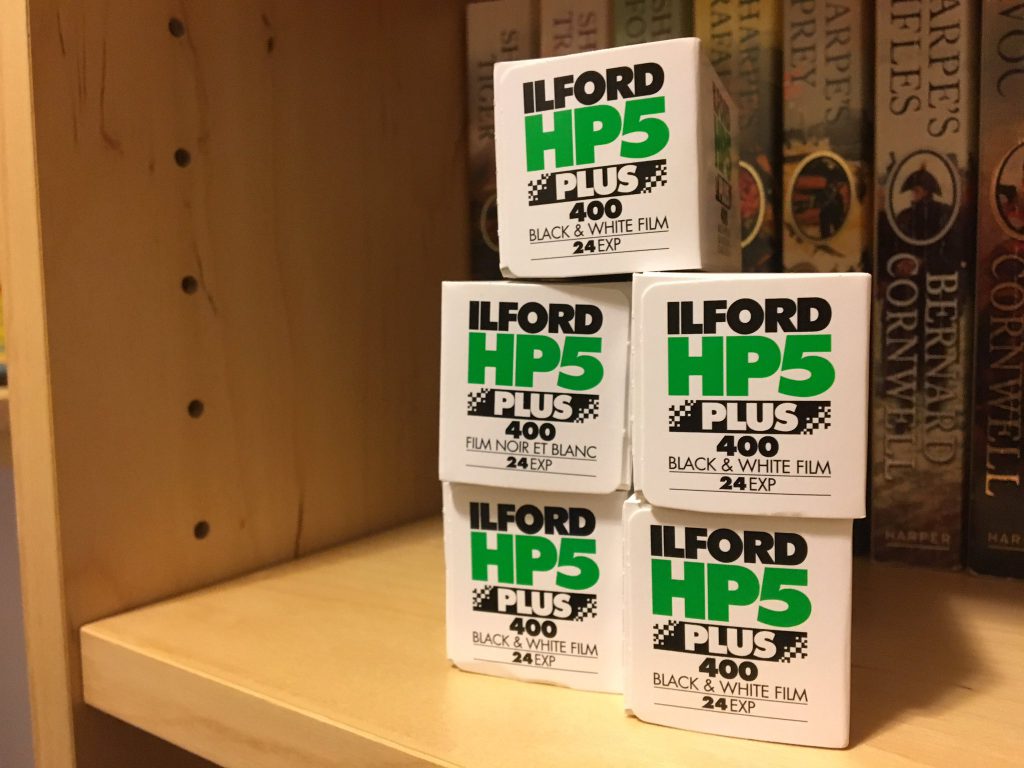
That film isn’t Delta 400, I don’t think I’ll ever grow to like the stock actually I just developed Delta 400 in Kodak D-23 and it turns out it’s not a bad film stock either, but I feel HP5+ can be one that I just might be able to. So I’ll give it a shot, get five rolls of the stock, load it up into trusted cameras, visit suitable locations, and then pick developers I’ve never used with 35mm HP5+ and go to town.
Roll One: SPUR HRX
I got the idea of using SPUR HRX after looking on Flickr after Tony posted a question on the Toronto Film Shooters Group. Tony had asked for developer recommendations for HP5+ and Mike suggested SPUR HRX. To be fair in this case, I also pushed the film a little bit more than an average day of shooting. I shot the roll indoors in a sort of abandoned, or rather closed campus of Sheridan College. I figured, if I’m going to learn to like the film, I might as well take it into a familiar situation for me.
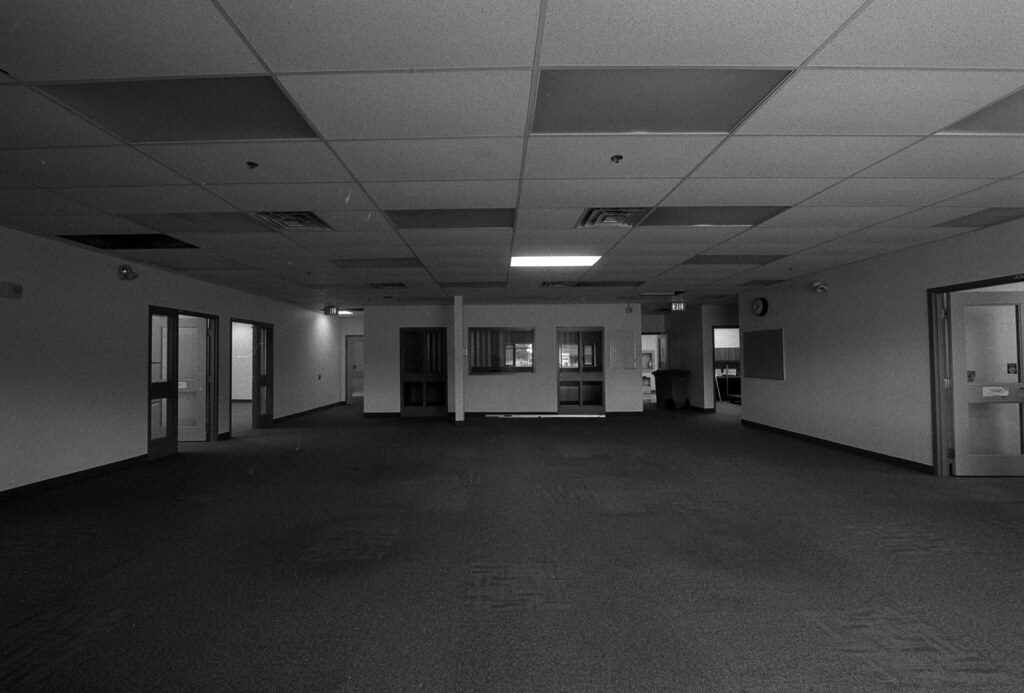
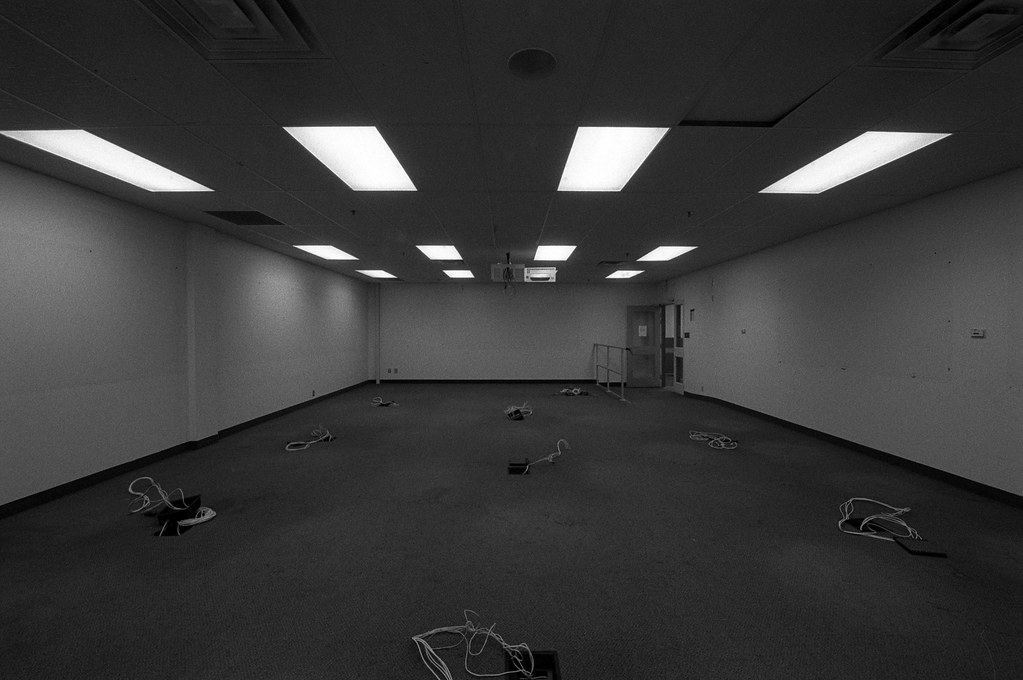

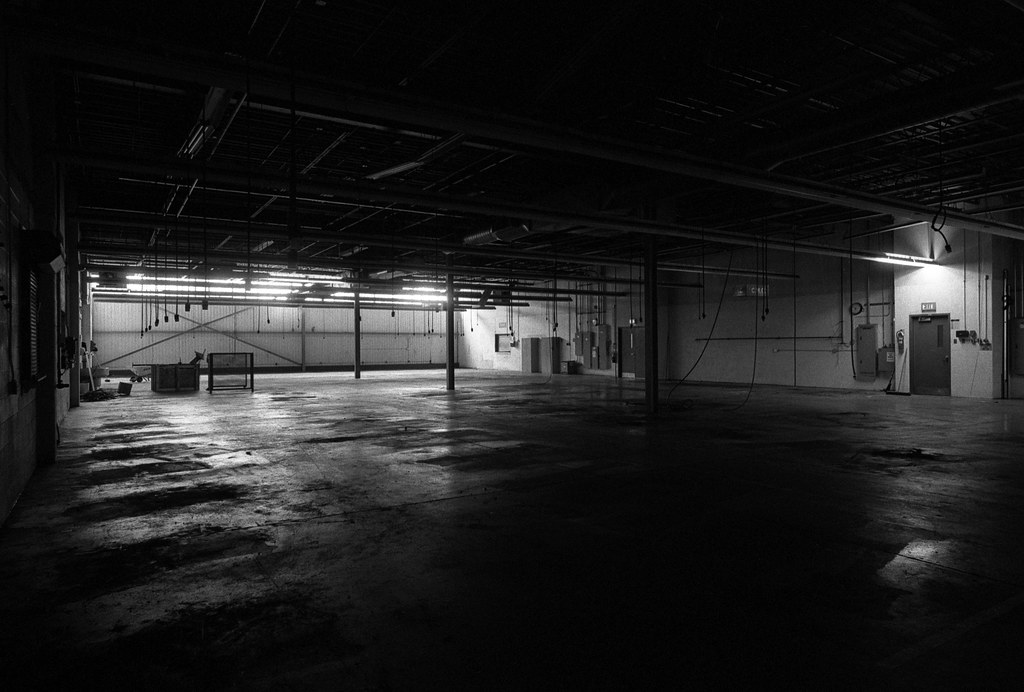
The results they speak for themselves, the images are dark, moody, and the contrast is rich. Not surprising given the lighting conditions. I did note that there a more substantial grain pattern, but using a sharp developer on a 400-speed film will do that, but it isn’t anything worth complaining.
Roll Two: Pyrocat-HD
When in doubt just run with a Pyro developer. I started working with Pyro based developers after seeing some of the amazing work Mat Marrash has been doing with HP5+ in 8×10 and this developer. Having some early morning light in Toronto, I loaded up the roll into my trusty Contax G2 and went to town!
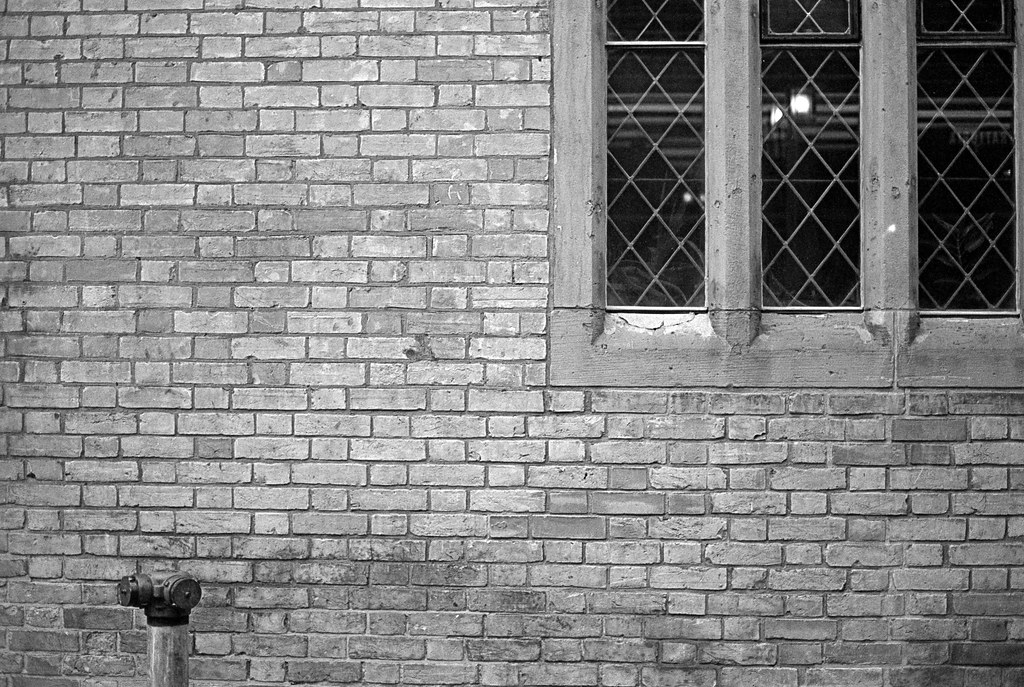
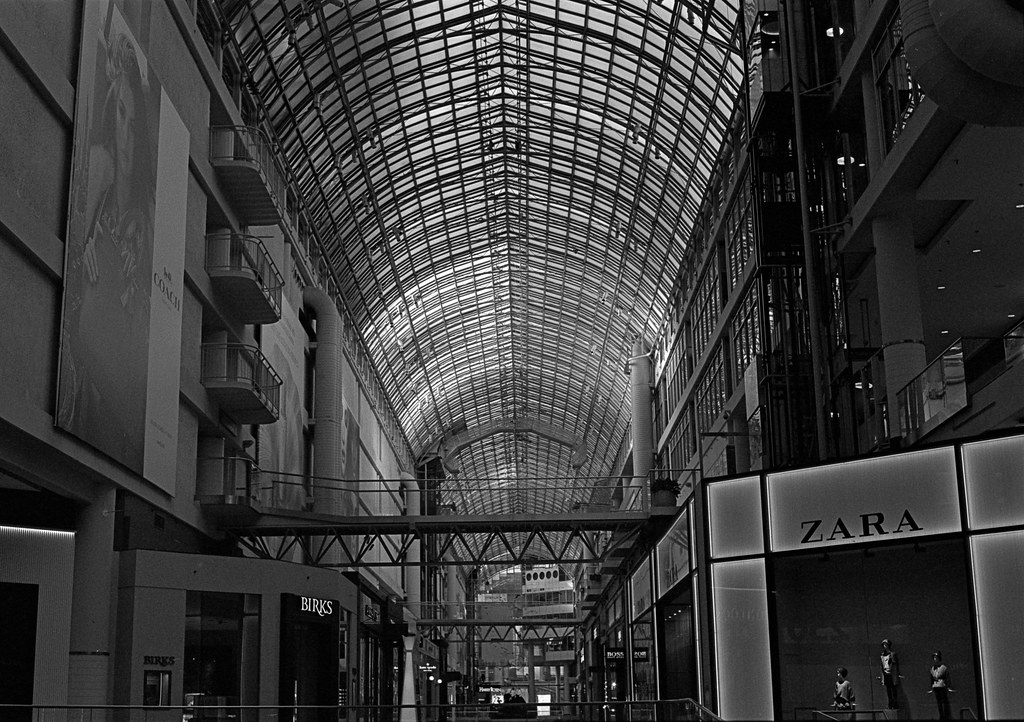
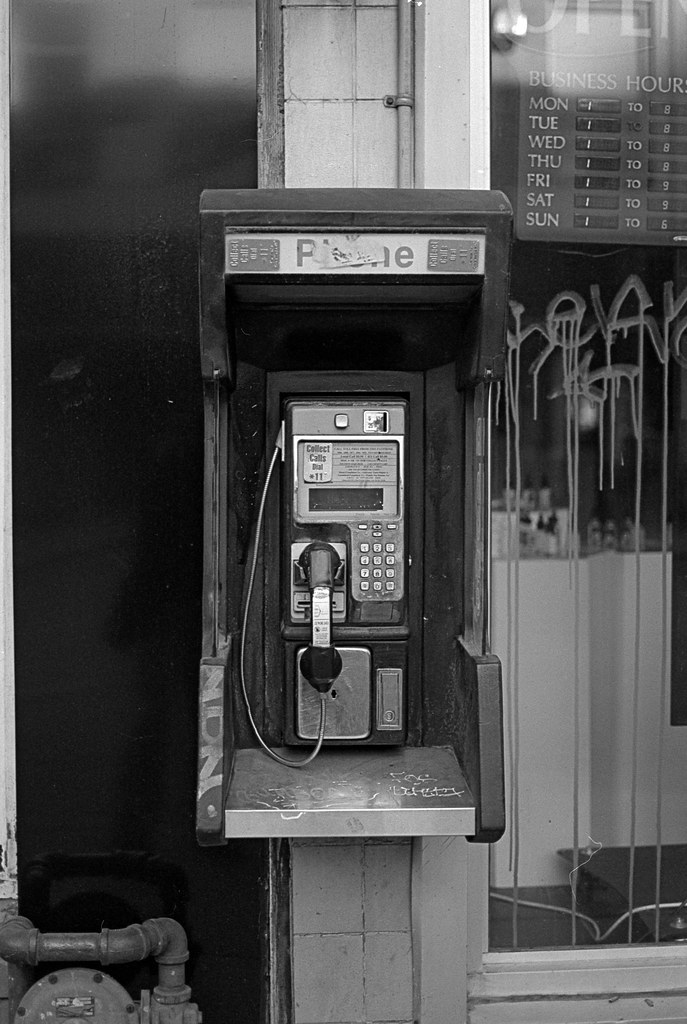

When I pulled the negatives out of the tank, I noticed something different, something I had only seen with Kodachrome. Yes, the layers of exposure on the film had a relief to them, as if the silver had been hand etched onto the film base itself. And then into the scanner and you saw this clean three-dimensional image, smooth tones and no grain at all.
Roll Three: Kodak D-23
One of the first developers I ever used was Kodak D-76, it was at the time the preferred developer of my teacher Julie Douglas. While I have only used a single jug of the stuff since, I have latched onto its cousin, the slower acting D-23. I’ve souped plenty of film stocks in it and like how it makes Tri-X look, so I figured it would be a good candidate.
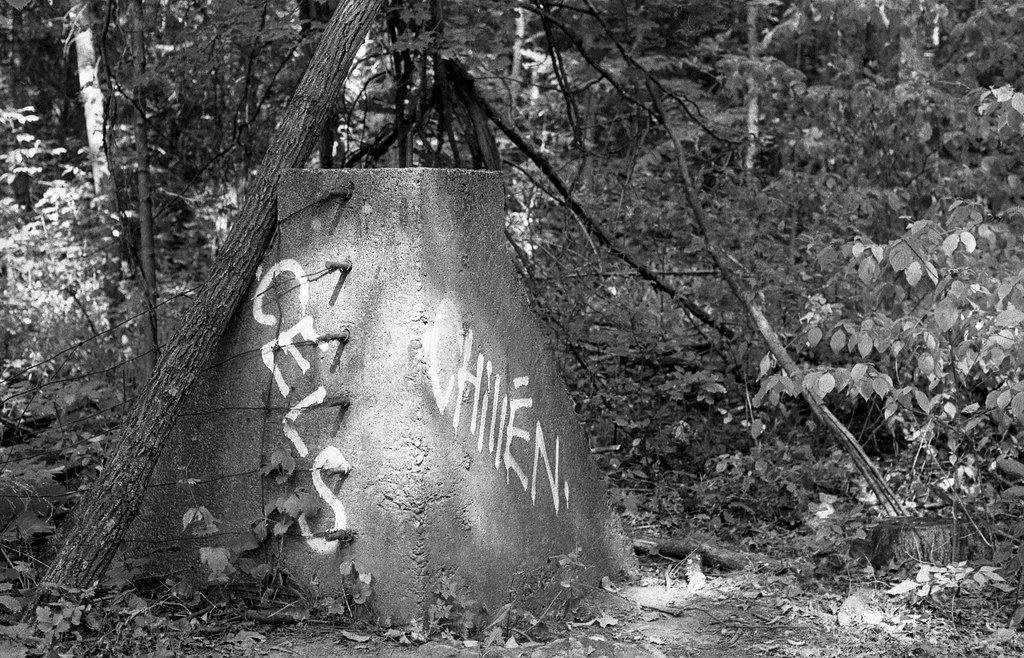
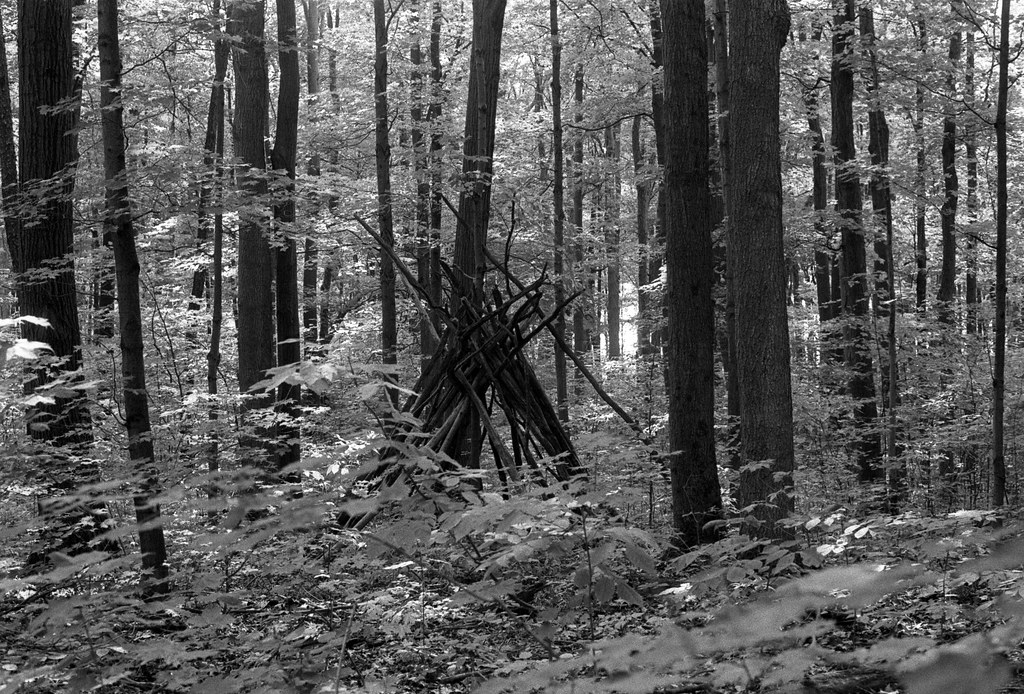
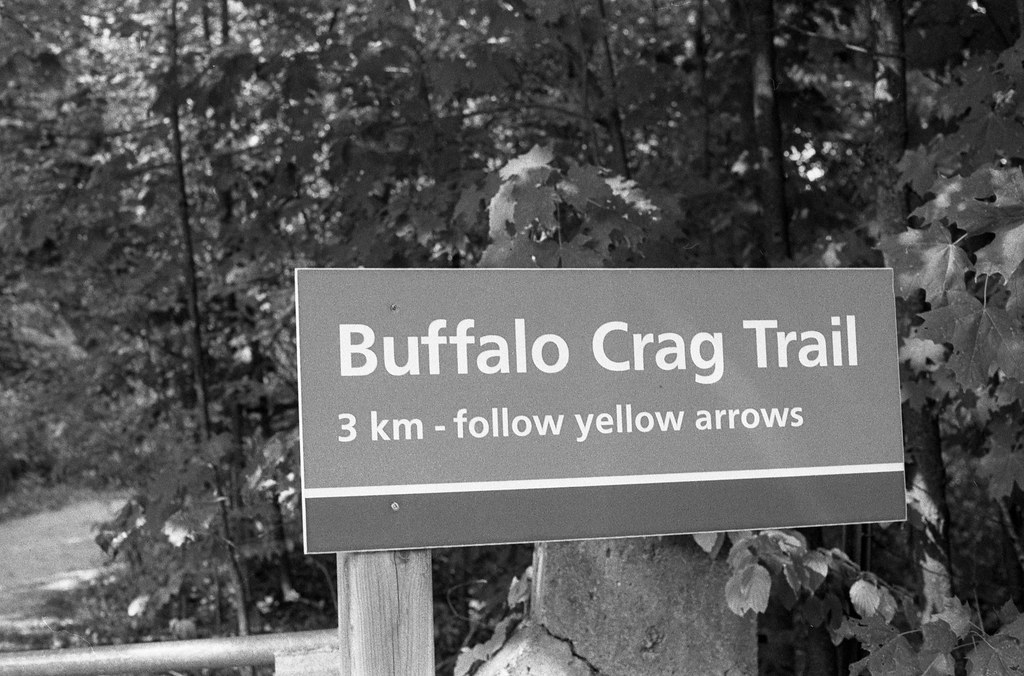
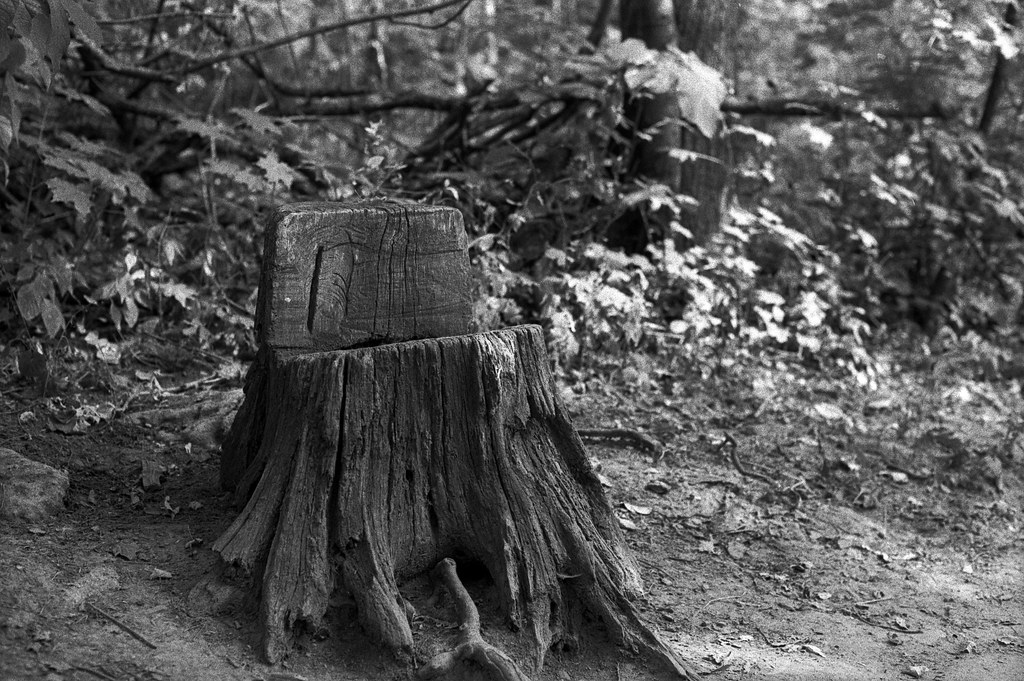
I really liked D-23, it performed as I expected it would give the usual smooth tones all the way through the grayscale. Indeed an excellent choice for the film. I’m now hankering to try this with medium and large format versions of HP5+.
Roll Four: Kodak Microdol-X
I happened across this developer completely by accident during my 52-sheet project and came to enjoy using it. While an older Kodak developer again, and not available under the Kodak name, but Legacy Pro has their Mic-X which is the same. Microdol is a fine grain soft developer so it should be able to work a bit of magic.
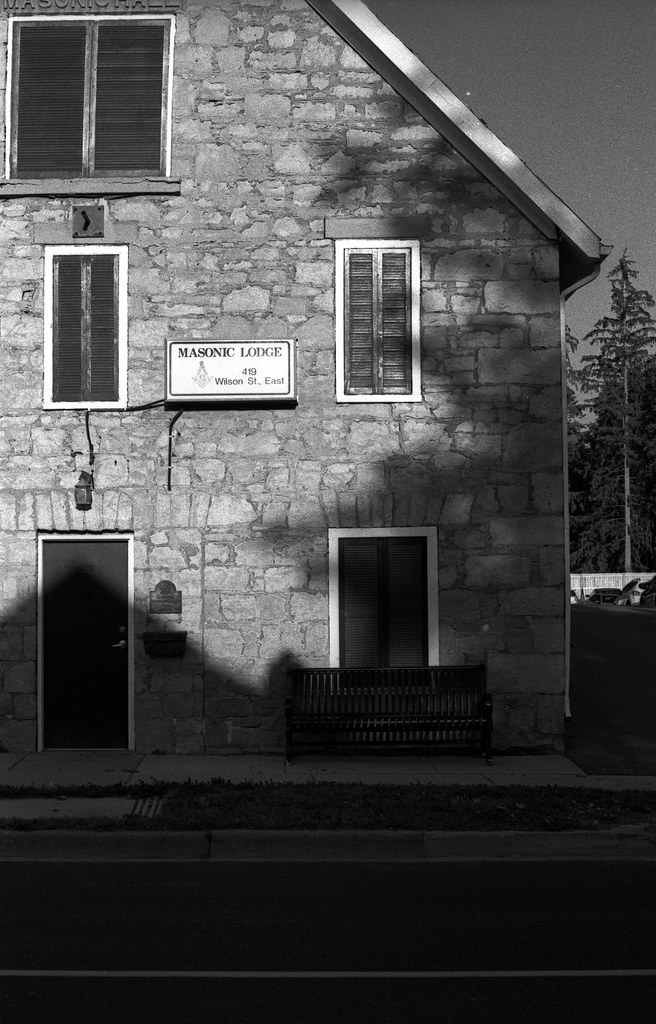



I honestly don’t know what went wrong with these photos. They all seemed overexposed. The camera, my Nikon F5 has a solid meter, the ASA/ISO setting was correct. Maybe it was the Orange-22 filter I used or the harsh sunlight. I had to work some post-processing magic on these. I think that I need to reduce the developing times by 1 minute or give the film a slight pull to make Microdol-X work.
Roll Five: Kodak HC-110
When you’re having trouble with something, how about going back to an old friend. Kodak HC-110 is one of two developers I have not stopped using since I started developing my own black & white film. The other is Rodinal, but not wanting to give the film one hell of a pull, I figured HC-110 in the standard Dilution B would be a good way to help out.
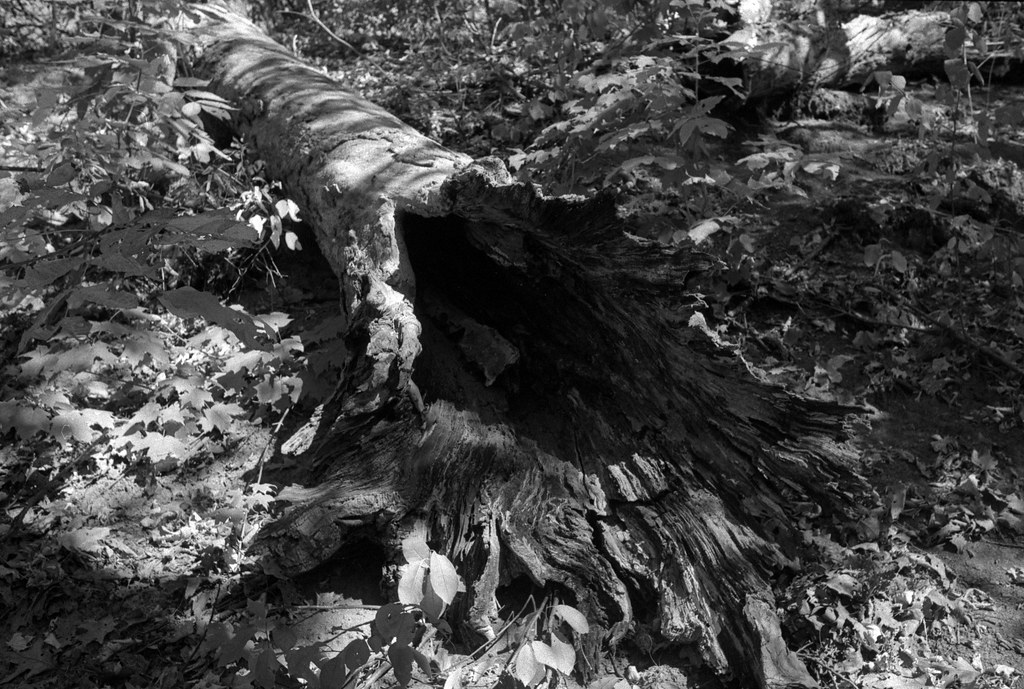
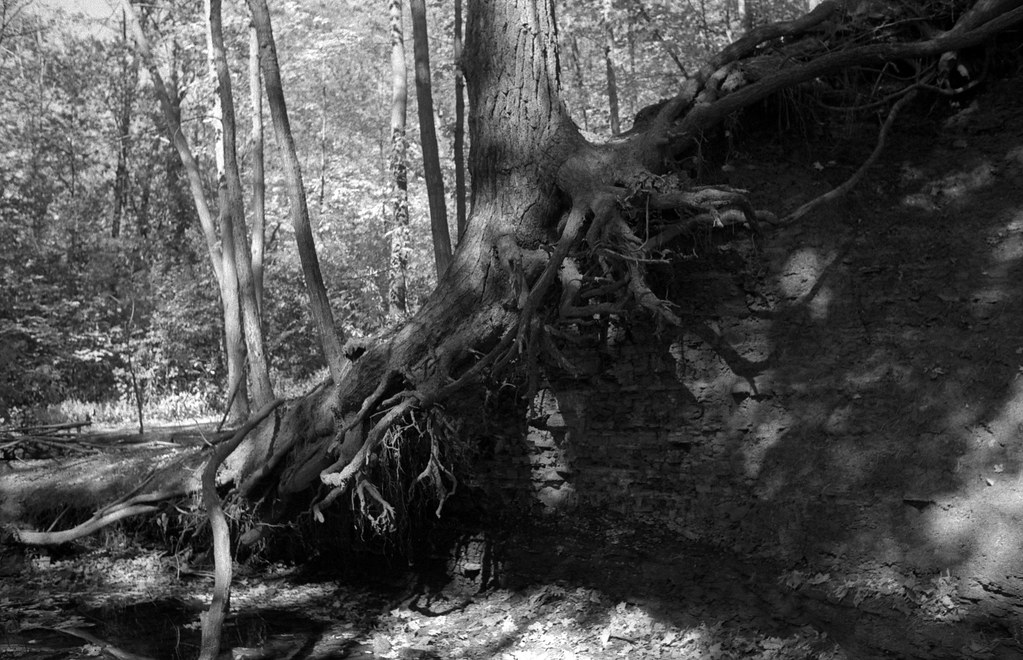
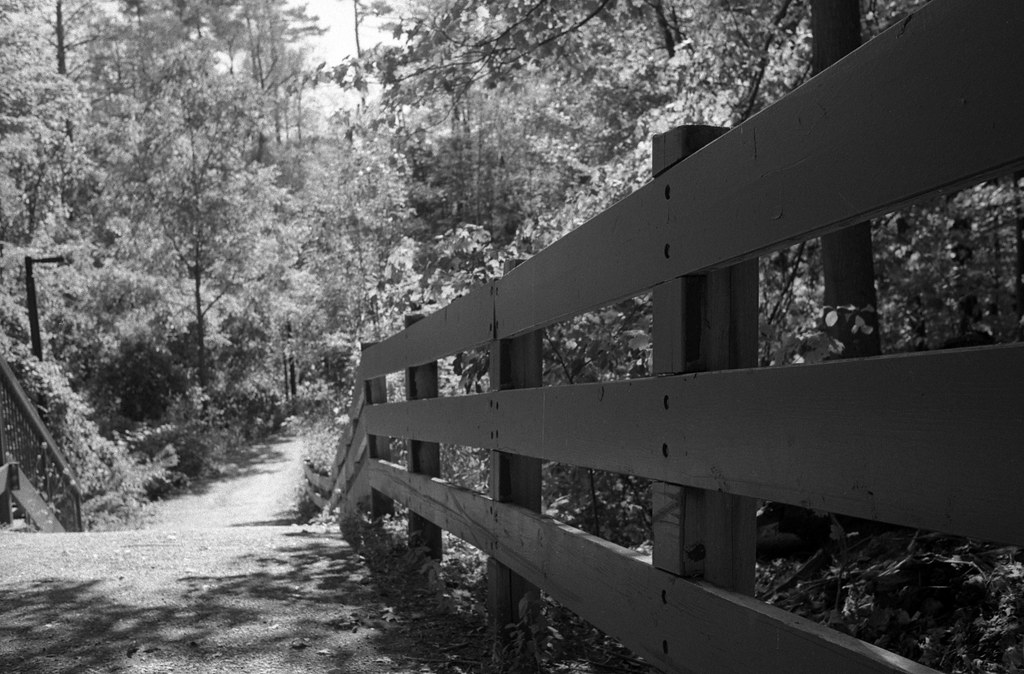
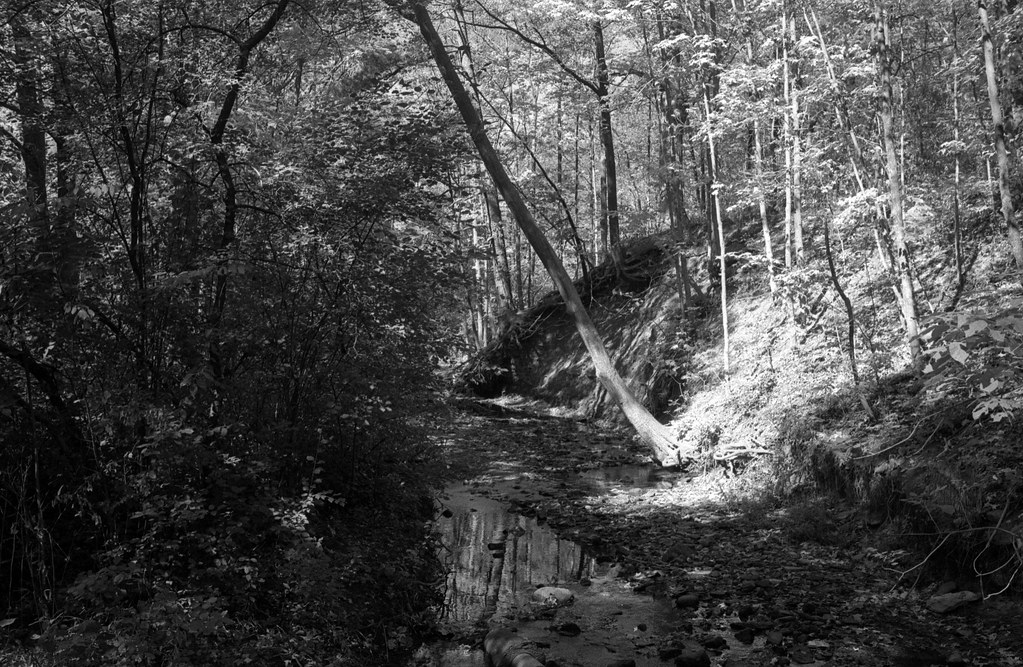
HP5 sings with HC-110, you get to see how sharp the film stock is with this Kodak developer, and the contrast is dead on point even in the strange lighting conditions that are a sun-dappled forest at high-noon. While not exactly the best time to be out shooting it provides a real test for what a film and developer can do, and HC-110 is a sure winner in this case.
When I first set out to shoot these five rolls of HP5+ I went into it thinking I didn’t like the film stock in 35mm, however, upon shooting these five rolls I realised that I did like the film, I had just had some bad encounters with it in the past. In the end, it’s a solid film stock one that I will use in the future because I won’t always be able to find Kodak Tri-X, and now I have several developing options. I also plan on trying to perfect that Microdol-X time/speed issue.